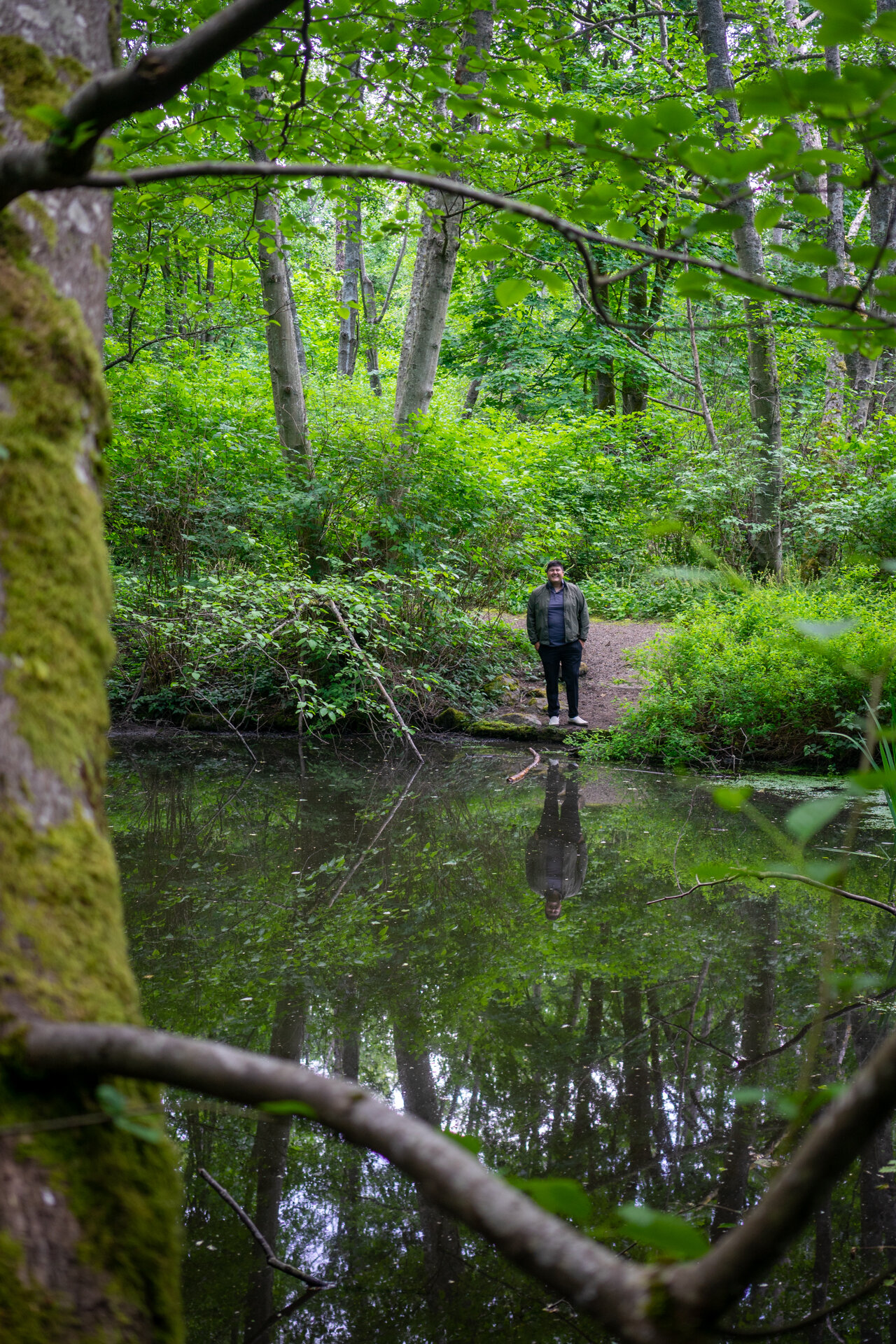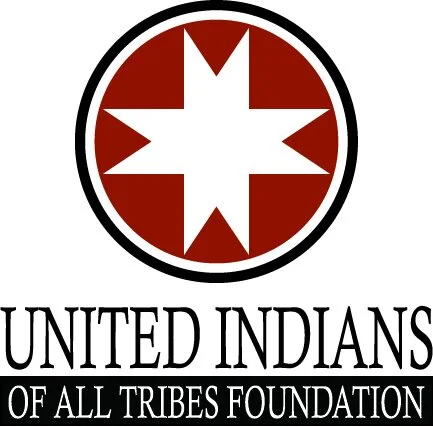Reclaiming Culture Through Environment Restoration: Tim’s Story
Urban planner and landscape designer Tim Lehman at Daybreak Star Indian Cultural Center in Discovery Park. Photo by Chloe Collyer.
“With the United Indians, we’re working on a restoration plan for their space within Discovery Park. The idea behind it is the reclamation of culture through that restoration.
So at their space at Daybreak Star there are three ponds. There’s this trail that goes up and around the three ponds that is this snake’s body. And it’s on a berm, and the trail is the ridge of the snail’s back. And then at the bottom pond, that’s where the snake’s head is and its mouth is around an egg. And that is a creation story of a particular Indigenous people.
These ponds don’t drain properly. At least the bottom one, and when it floods out it makes the space unusable. All these invasive plants have taken over. And so now with the idea of restoration, we are taking those invasive species out, replacing them with culturally relevant Indigenous native species.
We’re going to start growing sweetgrass, which was prominent in western Washington before Anglo colonization. It’s not around anymore because Indigenous stewards were removed from the shorelines. Sweetgrass needs to be pulled and disturbed in order to thrive. This is long grass that’s used to weave. A lot of grasses need that function. Think of on the east side when you have wildfires. A lot of plant species out there need wildfires to be able to grow and thrive and repopulate. This disturbance thing is part of life.
Indigenous peoples are the original stewards of the land. And we had that connection of knowing when to disturb something, why something needs to be disturbed. But we did it mindfully and we understood the reasons why to do it.”
Urban planner and landscape designer Tim Lehman at the on-site pond near Daybreak Star Indian Cultural Center in Discovery Park. Photo by Chloe Collyer.
Urban planner and landscape designer Tim Lehman in Discovery Park. Photo by Chloe Collyer.
Tim Lehman (he/him) is Northern Arapaho from the Wind River Reservation. He is a built environment consultant, activist, and associate teacher at the University of Washington. As an Urban Planner and Landscape Designer, Tim is passionate about Indigenous and underserved community development. He enjoys being in the field working with citizens to help better their communities. He is currently focused on bringing Indigeneity back into the realm of planning and design for communities who reside within the Pacific Northwest.
Community Partner Spotlight: United Indians of All Tribes
Founded in 1970, United Indians of All Tribes Foundation provides an extensive array of culturally responsive services and programming to Seattle and King County’s urban Native community. Its headquarters, the Daybreak Star Indian Cultural Center, was completed in 1977, and has become a hub of activity for Native peoples and their supporters locally, nationally, and internationally. Daybreak Star is home to a permanent collection of Native art, as well as the Sacred Circle Gallery featuring rotating exhibits of work by contemporary Native artists.
United Indians promotes the well-being of our region’s Indigenous community through services and programming that support cultural connection, school readiness, economic self-sufficiency, housing stability, and health and well-being. Its services are strengths-based and client-driven, in recognition of their community’s tremendous resilience, and sustain people in every age and stage of life.




